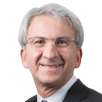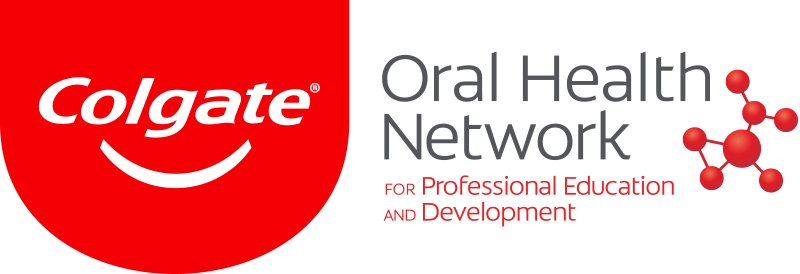SENDAI, Japan: Since various infectious diseases travel through airborne aerosol particles and droplets, researchers have recently sought to understand how exposure to aerosols can have adverse effects on patients and dental professionals during dental treatment. Namely, the study aimed to establish visualisation methods for droplet and aerosol identification, discover conditions for their generation in simulated dental treatments and identify the conditions for effective suction methods.
Not only saliva but also materials such as silicon, calcium, potassium and zinc can produce aerosols, which, if inhaled, can lead to respiratory issues. The researchers believe that understanding the spread and diffusion of such particles in the air can help protect individuals from potentially harmful substances and diseases that can be spread through airborne droplets.
Using a dental air turbine and a mannequin, researchers at Tohoku University in Sendai recreated the droplets and aerosols that occur during dental procedures. They used a high-sensitivity camera and high-intensity LED light source to create high-quality images of the droplet spreading during the simulated procedure and assessed the efficacy of extra-oral suction (EOS) and intra-oral suction (IOS). They found that the devices reduced droplet and aerosol spread in the air by 97.8% when both EOS and IOS were used and by 92.1% when only IOS was used.
“Since the droplets and aerosols (“spray” and “mist”) generated during dental treatment contain bacteria and viruses derived from saliva and blood, elucidation of their spreading and diffusion dynamics is required from the perspective of COVID-19 prevention,” said lead author Jun Watanabe, a researcher at the university.
The researchers also noted that the spread of the droplets changed, depending on the treatment and bur type. They found that cavity treatments on the anterior teeth were the most likely to be associated with droplet spreading and that a bud-shaped bur on the air turbine generated the most aerosols compared with round-shaped, round end-tapered or needle-tapered burs.
Additionally, they pointed out that it is vital to place the oral suction device correctly. The most effective positioning of the EOS device was found to be approximately 10 cm away from the patient’s mouth at a 0º angle.
“Analysis in various clinical situations is expected to elucidate the dynamics of dental treatment-derived droplets and aerosols and lead to the establishment of new dental treatment protocols, the development of air purification equipment and the development of a cleaner and safer dental care environment,” said co-author Prof. Hiroyasu Kanetaka, a researcher at the Liaison Center for Innovative Dentistry at Tohoku University.
Further research using a patient model is required to validate the efficacy of oral suction devices.
Tags:
BOSTON, US: During the pandemic, the majority of dental professionals had to cease their dental activities in order to slow down the spread of COVID-19. The...
The dental profession was hit hard by COVID-19, and there was great uncertainty about how to properly manage patient care at the start of the pandemic. Now ...
GREIFSWALD, Germany: A study by researchers at University Medicine Greifswald compared the risk of SARS-CoV-2 transmission among dental teams with that of ...
BRISTOL, UK: As Dental Tribune International has previously reported, thoughtful waste management is an increasingly important issue in dentistry in view of...
NEWCASTLE, UK: One of the main ways in which SARS-CoV-2 is communicated is through airborne respiratory droplets—droplets that can be dispersed as a ...
LEIPZIG, Germany: The pandemic has been a trying time for dentists, particularly for owner-dentists who must make decisions that may influence the safety of...
LOMA LINDA, Calif., U.S.: Airborne respiratory droplets are one of the main modes of transmission of SARS-CoV-2, and the common use of aerosol-generating ...
COLUMBUS, Ohio, U.S.: Researchers worldwide investigate COVID-19, and every week, new information about the illness is discovered or confirmed. A recent ...
The pandemic has caused professional and private challenges. However, some people managed to use this downtime to stimulate their creativity and to test ...
Live webinar
Mon. 29 April 2024
12:30 pm EST (New York)
Prof. Roland Frankenberger Univ.-Prof. Dr. med. dent.
Live webinar
Tue. 30 April 2024
1:00 pm EST (New York)
Live webinar
Fri. 3 May 2024
1:00 pm EST (New York)
Live webinar
Tue. 7 May 2024
8:00 pm EST (New York)
Live webinar
Thu. 9 May 2024
8:00 pm EST (New York)
Live webinar
Mon. 13 May 2024
9:00 am EST (New York)
Live webinar
Mon. 13 May 2024
1:00 pm EST (New York)
Doc. MUDr. Eva Kovaľová PhD.



 Austria / Österreich
Austria / Österreich
 Bosnia and Herzegovina / Босна и Херцеговина
Bosnia and Herzegovina / Босна и Херцеговина
 Bulgaria / България
Bulgaria / България
 Croatia / Hrvatska
Croatia / Hrvatska
 Czech Republic & Slovakia / Česká republika & Slovensko
Czech Republic & Slovakia / Česká republika & Slovensko
 France / France
France / France
 Germany / Deutschland
Germany / Deutschland
 Greece / ΕΛΛΑΔΑ
Greece / ΕΛΛΑΔΑ
 Italy / Italia
Italy / Italia
 Netherlands / Nederland
Netherlands / Nederland
 Nordic / Nordic
Nordic / Nordic
 Poland / Polska
Poland / Polska
 Portugal / Portugal
Portugal / Portugal
 Romania & Moldova / România & Moldova
Romania & Moldova / România & Moldova
 Slovenia / Slovenija
Slovenia / Slovenija
 Serbia & Montenegro / Србија и Црна Гора
Serbia & Montenegro / Србија и Црна Гора
 Spain / España
Spain / España
 Switzerland / Schweiz
Switzerland / Schweiz
 Turkey / Türkiye
Turkey / Türkiye
 UK & Ireland / UK & Ireland
UK & Ireland / UK & Ireland
 Brazil / Brasil
Brazil / Brasil
 Canada / Canada
Canada / Canada
 Latin America / Latinoamérica
Latin America / Latinoamérica
 USA / USA
USA / USA
 China / 中国
China / 中国
 India / भारत गणराज्य
India / भारत गणराज्य
 Japan / 日本
Japan / 日本
 Pakistan / Pākistān
Pakistan / Pākistān
 Vietnam / Việt Nam
Vietnam / Việt Nam
 ASEAN / ASEAN
ASEAN / ASEAN
 Israel / מְדִינַת יִשְׂרָאֵל
Israel / מְדִינַת יִשְׂרָאֵל
 Algeria, Morocco & Tunisia / الجزائر والمغرب وتونس
Algeria, Morocco & Tunisia / الجزائر والمغرب وتونس
 Middle East / Middle East
Middle East / Middle East
:sharpen(level=0):output(format=jpeg)/up/dt/2024/04/Shutterstock_1017664873.jpg)
:sharpen(level=0):output(format=jpeg)/up/dt/2024/04/Treating-periodontal-disease-reduces-atrial-fibrillation-recurrence.jpg)
:sharpen(level=0):output(format=jpeg)/up/dt/2024/04/3Shape-charts-sustainable-course-with-release-of-comprehensive-sustainability-report-2023.jpg)
:sharpen(level=0):output(format=jpeg)/up/dt/2024/04/Zumax-Medical-Image-1.jpg)
:sharpen(level=0):output(format=jpeg)/up/dt/2024/04/IDEM-2024-Wraps-up-its-13th-edition-with-record-breaking-success.jpg)








:sharpen(level=0):output(format=png)/up/dt/2014/02/Du%CC%88rr_Dental.png)
:sharpen(level=0):output(format=png)/up/dt/2023/11/Patent%E2%84%A2-Implants-_-Zircon-Medical.png)
:sharpen(level=0):output(format=png)/up/dt/2021/02/logo-gc-int.png)
:sharpen(level=0):output(format=png)/up/dt/2024/01/UnionTech-Logo-Hub.png)
:sharpen(level=0):output(format=png)/up/dt/2024/01/ClearCorrect_Logo_Grey_01-2024.png)
:sharpen(level=0):output(format=png)/up/dt/2022/01/HASSBIO_Logo_horizontal.png)
:sharpen(level=0):output(format=jpeg)/up/dt/2023/04/Visualization-of-droplets-and-aerosols.jpg)

:sharpen(level=0):output(format=jpeg)/up/dt/2024/04/Shutterstock_1017664873.jpg)
:sharpen(level=0):output(format=jpeg)/up/dt/2024/03/profile-image-300x300.jpg)
:sharpen(level=0):output(format=jpeg)/up/dt/2023/01/Dental-practitioners-did-not-face-increased-risk-of-COVID-19-during-clinical-activities-study-says.jpg)
:sharpen(level=0):output(format=jpeg)/up/dt/2022/07/Nagihan-Bostanci_EuroPerio10.jpg)
:sharpen(level=0):output(format=jpeg)/up/dt/2022/02/Dentists-in-Germany-no-more-likely-to-catch-COVID-19-than-general-population.jpg)
:sharpen(level=0):output(format=jpeg)/up/dt/2022/02/New-face-shield-could-reduce-dental-clinical-waste-provide-better-protection.jpg)
:sharpen(level=0):output(format=jpeg)/up/dt/2021/12/fans.jpg)
:sharpen(level=0):output(format=jpeg)/up/dt/2021/08/Literature-favours-air-purifiers-as-COVID-19-transmission-risk-mitigant.jpg)
:sharpen(level=0):output(format=jpeg)/up/dt/2021/06/Combination-of-evacuation-systems-makes-dental-clinics-safer.jpg)
:sharpen(level=0):output(format=jpeg)/up/dt/2021/05/Transmission-of-SARS-very-unlikely_780-x-439.jpg)
:sharpen(level=0):output(format=jpeg)/up/dt/2021/05/ZachandDad-1.jpg)






:sharpen(level=0):output(format=jpeg)/up/dt/2024/04/Shutterstock_1017664873.jpg)
:sharpen(level=0):output(format=jpeg)/up/dt/2024/04/Treating-periodontal-disease-reduces-atrial-fibrillation-recurrence.jpg)
:sharpen(level=0):output(format=jpeg)/up/dt/2024/04/3Shape-charts-sustainable-course-with-release-of-comprehensive-sustainability-report-2023.jpg)
:sharpen(level=0):output(format=jpeg)/wp-content/themes/dt/images/3dprinting-banner.jpg)
:sharpen(level=0):output(format=jpeg)/wp-content/themes/dt/images/aligners-banner.jpg)
:sharpen(level=0):output(format=jpeg)/wp-content/themes/dt/images/covid-banner.jpg)
:sharpen(level=0):output(format=jpeg)/wp-content/themes/dt/images/roots-banner-2024.jpg)
To post a reply please login or register